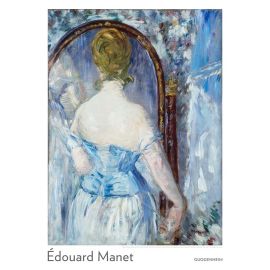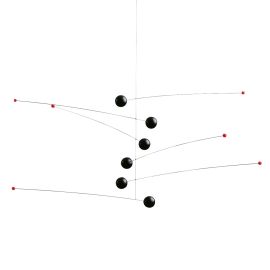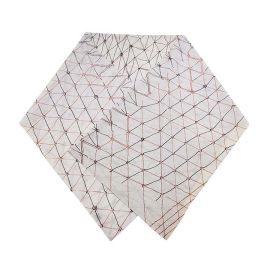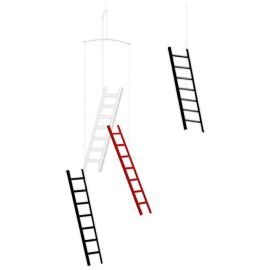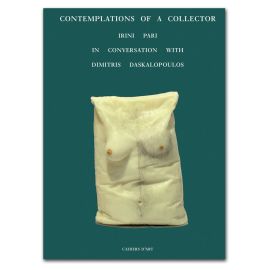Camille Pissarro, The Hermitage at Pontoise (Les coteaux de lHermitage, Pontoise) was completed ca. 1867.
Camille Pissarro, The Hermitage at Pontoise (Les coteaux de lHermitage, Pontoise) was completed ca. 1867.
- Paper dimensions 24" H x 30" W
- Image dimensions 26.5" H x 20" W
- Part of the Guggenheim's Permanent Collection
About the Artist:
JacobAbrahamCamille Pissarro was born on July 10, 1830, to French Jewish parents on the West Indies island of Saint Thomas. Sent to boarding school in France, he returned after six years to work in his parents store. Pissarro abandoned this comfortable bourgeois existence at the age of twenty-two, when he left for Caracas with Danish painter Fritz Melbye, who became his first serious artistic influence.
After returning briefly to Saint Thomas, Pissarro left in 1855 for Paris, where he studied at various academic institutions (including the cole des Beaux-Arts and Acadmie Suisse) and under a succession of masters, such as Jean-Baptiste-Camille Corot, Gustave Courbet, and Charles-Franois Daubigny. Corot is often considered Pissarros most important early influence; Pissarro listed himself as Corots pupil in the catalogues to the 1864 and 1865 Paris Salons. While Pissarro was accepted to show at the official Salon throughout the 1860s, in 1863 he participated with Edouard Manet, James Abbott McNeill Whistler, and others in the historic Salon des Refuss. At the close of the decade, he moved to Louveciennes (near the Seine, twenty miles from Paris). Working in close proximity with Claude Monet, Pierre Auguste Renoir, and Alfred Sisley, he began to revise his method of landscape painting, privileging the role of color in his expression of natural phenomena and employing smaller patches of paint. This artistic circle was dispersed by the Franco-Prussian War, which Pissarro fled by moving to London in 187071. There he met Paul Durand-Ruel, the Parisian dealer who would become an ardent supporter of Pissarro and his fellow Impressionists. Pissarro participated in his last official Salon in 1870.
The years after Pissarros return to France were seminal ones. He settled in Pontoise, where he received young artists seeking advice, including Paul Czanne and Paul Gauguin. He took part in the first Impressionist exhibition in 1874. Pissarroalong with Edgar Degas, one of the Salons most passionate criticswas the only artist to show at all eight of the Impressionist exhibitions, the last of which took place in 1886.
Pissarro experienced somewhat of an artistic crisis in 1885. As he had done consistently throughout his career, he opened himself up to fresh influences by meeting with the younger generation, this time with Paul Signac and Georges Seurat, who were experimenting with a divisionist technique rooted in the scientific study of optics.
Pissarro lived long enough to witness the start of the Impressionists fame and influence. He was revered by the Post-Impressionists, including Czanne and Gauguin, who both referred to him toward the end of their own careers as their master. In the last years of his life, Pissarro experienced eye trouble, which forced him to abandon outdoor painting. He continued to work in his studio until his death in Paris on November 13, 1903.
| Skip FB/IG Feed? | No |
|---|---|
| Description | Camille Pissarro, The Hermitage at Pontoise (Les coteaux de lHermitage, Pontoise) was completed ca. 1867.
About the Artist: JacobAbrahamCamille Pissarro was born on July 10, 1830, to French Jewish parents on the West Indies island of Saint Thomas. Sent to boarding school in France, he returned after six years to work in his parents store. Pissarro abandoned this comfortable bourgeois existence at the age of twenty-two, when he left for Caracas with Danish painter Fritz Melbye, who became his first serious artistic influence. After returning briefly to Saint Thomas, Pissarro left in 1855 for Paris, where he studied at various academic institutions (including the cole des Beaux-Arts and Acadmie Suisse) and under a succession of masters, such as Jean-Baptiste-Camille Corot, Gustave Courbet, and Charles-Franois Daubigny. Corot is often considered Pissarros most important early influence; Pissarro listed himself as Corots pupil in the catalogues to the 1864 and 1865 Paris Salons. While Pissarro was accepted to show at the official Salon throughout the 1860s, in 1863 he participated with Edouard Manet, James Abbott McNeill Whistler, and others in the historic Salon des Refuss. At the close of the decade, he moved to Louveciennes (near the Seine, twenty miles from Paris). Working in close proximity with Claude Monet, Pierre Auguste Renoir, and Alfred Sisley, he began to revise his method of landscape painting, privileging the role of color in his expression of natural phenomena and employing smaller patches of paint. This artistic circle was dispersed by the Franco-Prussian War, which Pissarro fled by moving to London in 187071. There he met Paul Durand-Ruel, the Parisian dealer who would become an ardent supporter of Pissarro and his fellow Impressionists. Pissarro participated in his last official Salon in 1870. The years after Pissarros return to France were seminal ones. He settled in Pontoise, where he received young artists seeking advice, including Paul Czanne and Paul Gauguin. He took part in the first Impressionist exhibition in 1874. Pissarroalong with Edgar Degas, one of the Salons most passionate criticswas the only artist to show at all eight of the Impressionist exhibitions, the last of which took place in 1886. Pissarro experienced somewhat of an artistic crisis in 1885. As he had done consistently throughout his career, he opened himself up to fresh influences by meeting with the younger generation, this time with Paul Signac and Georges Seurat, who were experimenting with a divisionist technique rooted in the scientific study of optics. Pissarro lived long enough to witness the start of the Impressionists fame and influence. He was revered by the Post-Impressionists, including Czanne and Gauguin, who both referred to him toward the end of their own careers as their master. In the last years of his life, Pissarro experienced eye trouble, which forced him to abandon outdoor painting. He continued to work in his studio until his death in Paris on November 13, 1903.
|


